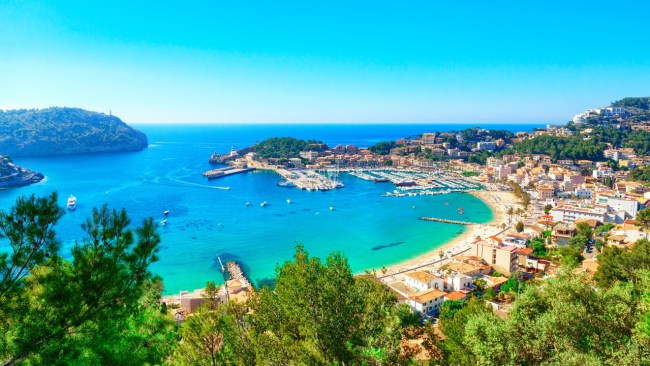SA Museum “Wonders” exhibition celebrates 165 years
A wonder chamber of magic, minerals, meteorites and cultural curiosities has been opened up to the public to celebrate 165 years of the SA Museum.
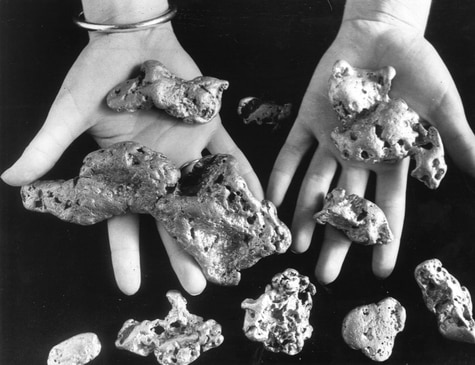
Lifestyle
Don't miss out on the headlines from Lifestyle. Followed categories will be added to My News.
Just 20 years after the state was founded, 165 years ago this June, the South Australian Museum was born.
Director Brian Oldman says that makes our museum “older than the Metropolitan Museum of Art in New York and the Natural History Museum in London”.
He believes the haste to create a collection reflected a fascination with the unique local environment, which was a world away from the familiar.
“In the 19th Century, museum curators and scientists wrote weekly columns in the local papers to highlight what was on show in the museum, with most plants, animals, insects and even minerals entirely new to visitors,” he says.
“I think of the first museum curator, Frederick Waterhouse, coming from England to a place totally beyond his own experience and that of most Europeans in terms of Australia’s unique landscape, flora and fauna.
“Now we are a global player. The museum’s roots are in South Australia, but its branches reach far beyond.”
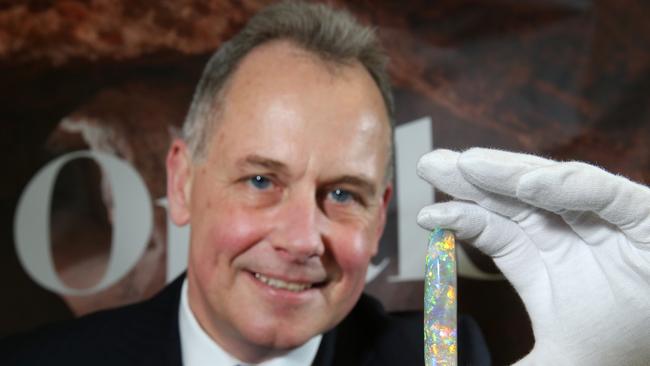
The latest exhibition, Wonders from the South Australian Museum, was created to showcase some of the treasures in the collection that are not on permanent display. And sponsorship from the Department of Premier and Cabinet means entry to the exhibition is free.
Senior anthropology curator, Philip Jones, says staff were all “too busy to do something that covers all of the Museum’s areas” so a guest curator Nat Williams was brought in from Canberra.
Fortunately, Mr Jones says, everyone seems to be quite pleased with the result.
“Working in a museum with such rich stories. it can be a little bit like ‘spin the bottle’ when you come to making selections, because you know for every category of objects, there would be a multiplicity of choices, the collection is so rich,” he says.
“But I think what Nat has done is to steer the path between, the unusual and the spectacular, the objects that give you an insight into a particular field of science, or human knowledge.
“And that’s what the museum is about, steering a path, between education and entertainment.”
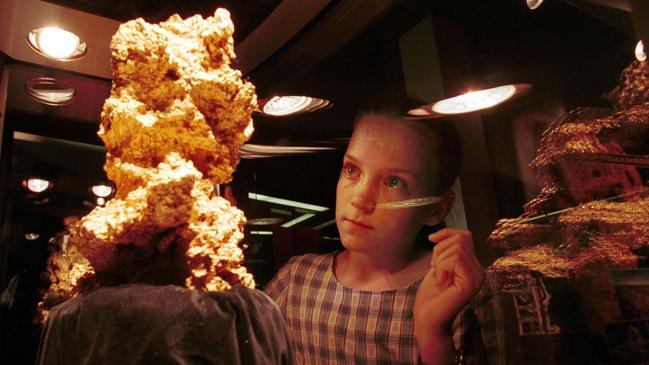
The museum’s head of public engagement, Justine Van Mourik, is drawn to the minerals case, because the contents are worth “millions of dollars, in just one case … the case with the most alarms shall we say”.
“This is amazing, this case, you’ve got a Martian meteorite, you’ve got three uncut diamonds. you’ve got the Virgin rainbow, which is the most expensive opal in the world,” she says.
“Behind that is another meteorite and then, the first gold nugget mined in Australia, which was mined at Montacute, so you know, just up North East Road.
“And that beautiful brooch is actually made from Barossa gold and Burra malachite. So what South Australians don’t realise is that South Australia was the first place that gold was mined in Australia. It’s just that we ran out and then everyone went to Victoria.”
Ms Van Mourika relays the discovery of the 4.5 billion year old Kingston On Murray meteorite, an oddity found in 1985 by farmer Harold Pope, while ploughing his field.
“He just put it in the shed until someone said to him, ‘I think that’s a meteorite, you should take it to the museum’. It was donated to the Museum in October 2019.”
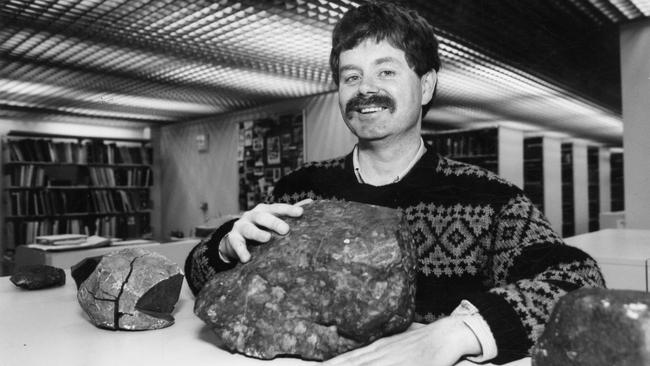
Under state law, any meteorite found in South Australia belongs to the Crown and must be lodged with the Museum. About 70 meteorites have been found in SA so far.
This particular specimen is an “oriented” meteorite: The striations on the surface of the are flow lines that formed as the outer surface melted as it entered the Earth’s atmosphere.
Most meteorites come from the Asteroid Belt that lies between the orbits of Mars and Jupiter.
But the museum does have a small piece of a meteorite that came from Mars and landed in Egypt, 1911.
“It wasn’t until 1983 that NASA scientists discovered gases within the Nahkla meteorite were identical to those in the atmosphere found and analysed on Mars by the Viking landers in 1976, proving that the Nahkla meteorite was from the Red Planet,” reads the label on the wall by the multimillion-dollar cabinet. “So, here is a real piece of Mars on Earth!”
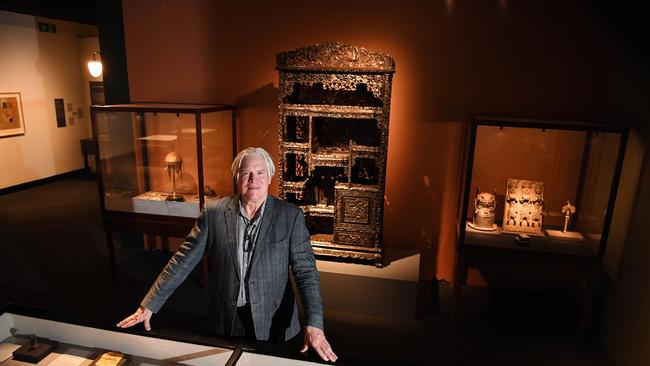
Mr Williams is best known for his work creating exhibitions for the National Library of Australia such as “Mapping our World”, and “Handwritten: Manuscript Treasures from Berlin”. He was also the library’s inaugural Treasures Curator and pioneering its Treasures Gallery from 2011.
For this project he made a couple of trips to Adelaide, interviewed staff and toured behind the scenes, unearthing all kinds of weird and wonderful treasures.
“It’s a really nice project to work on because the collection here is extraordinarily rich and I don’t think people realise that,” Mr Williams says.
“I lived and worked in Adelaide for 12 years and I knew, through coming to exhibitions and visiting the museum and knowing people that worked here, what an interesting range of material there was, but until I went to (the storage facility at) Netley, which is soon to be surpassed by a joint storage facility for all these extraordinary cultural collections, until I went out there and was privileged to be shown behind the scenes and pull out things, I had no idea.”
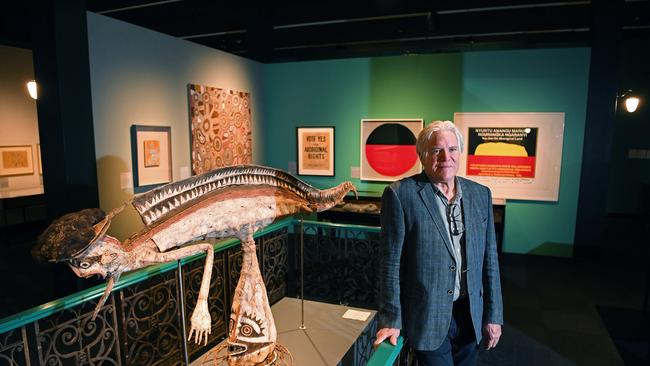
The birthday, celebrated on June 18, marks the date legislation passed parliament to establish an institute for the purpose of a museum (1856).
The original South Australian Institute building was constructed in 1860 and the museum opened there in 1862.
Like Mr Oldman, Mr Williams is impressed with the way SA “went straight into cultural collecting mode”.
“Within a short space of time there was an institute that fused all the collections together, the library, the museum and the art gallery,” he says. “It was never big enough. Even then, they had more in the collections than could be made available on display as an exhibition.”
During his research he trawled through the Trove website for articles about the museum and found it was “always abundantly clear … how much love the South Australian public had for the museum” and also, in terms of acquisitions, how generous the public had been.
That tradition continues to this day and is perhaps now, more important than ever.
“Because we live in very troubled times, with climate change, with a pandemic going on, all sorts of weird things happening in our world,” he says. “And one constant in my life and probably a lot of people’s lives is the idea that museums last for a long time.
“And then if you actually include your story, connected to your family through a possession, to a museum, you’re part of history, you’re actually part of a continuity that goes on for centuries.
“I think that’s important to people, particularly in a world which is becoming less certain.”
Wonders from the SA Museum runs until August 8.
FIVE FAVOURITES
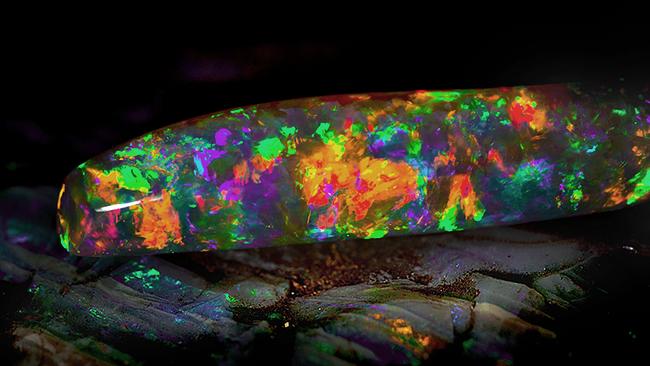
1. THE VIRGIN RAINBOW
This 72 carat opalised belemnite (squid-like cephalopod) is the finest quality crystal opal ever unearthed. Found in 2003 at the Brown’s Folly field at Coober Pedy, it measures almost 70mm in length and is composed of extremely rare black crystal opal with large patches of full spectral colour against a natural dark background. Not only is it the finest stone ever recovered from Coober Pedy, it is also the finest quality opalised fossil unearthed anywhere to date. The 100 million year old fossilised belemnite ‘guard’ (similar to a cuttlebone) has been polished to reveal the magnificence of its opal replacement.
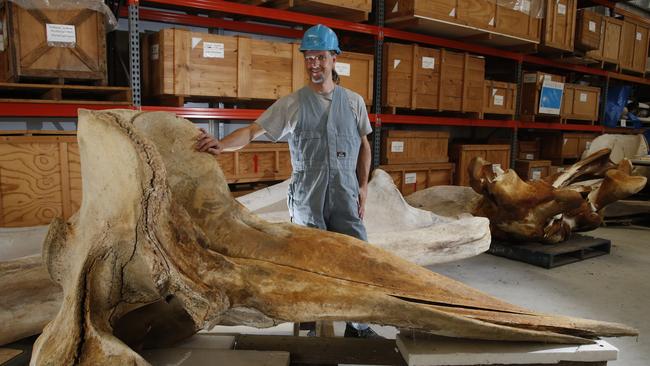
2. FEMALE SPERM WHALE SKULL
When eight sperm whales stranded near Ardrossan in 2014, only one managed to survive. The local community and council, Arium mine workers, the Environment and Water Department and the University of Adelaide came together to assist the museum to safely recover the whale skeletons including this skull, and bury the remaining carcasses on the shore. The museum also collected the lower jaws and teeth of all whales for research. Sperm whale teeth have always been valued throughout history, from making scrimshaw to learning about the whale’s history and biology through tooth ageing and stable isotope analysis. It has left such a lasting impression that the community built a memorial at the stranding site with seven granite boulders, one for each whale.
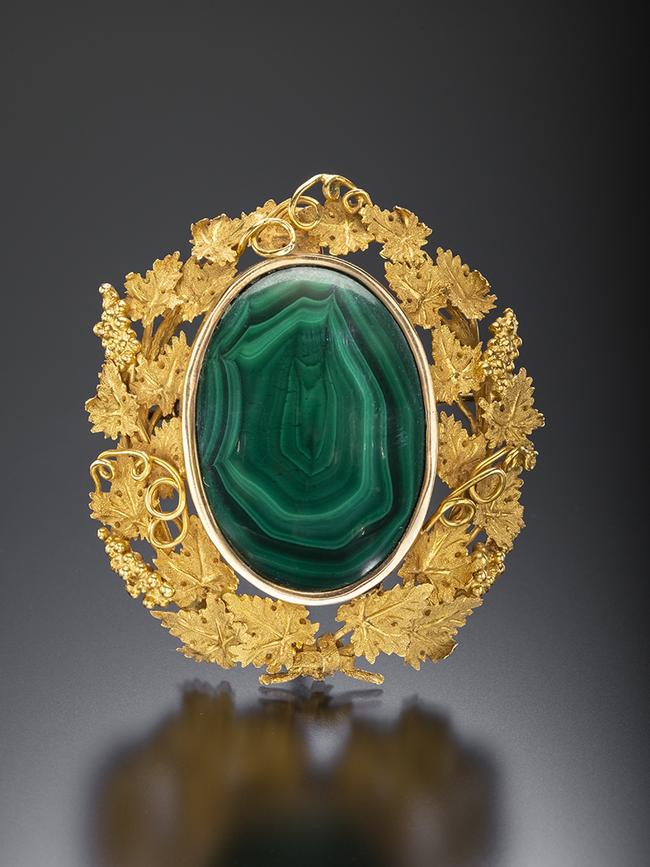
3. C.E. FIRNHABER BROOCH
Charles Firnhaber was one of the first German settlers to reach Adelaide, arriving from Bremen in March 1847. Firnhaber probably started working for established Adelaide jewellers, George Griffin, (est. 1840), and John Henry Pace, (est. 1841) before establishing his own business in 1849. He was regularly commissioned by prominent South Australians and businesses to design and make presentation, civic and ecclesiastical objects as well as fine jewellery including this beautiful Barossa gold brooch featuring Burra malachite. Gold was first discovered in the Barossa in 1868 with a total of 50,000 ounces extracted over just two years. By late 1870, the gold rush had subsided and less than 100 miners remained.
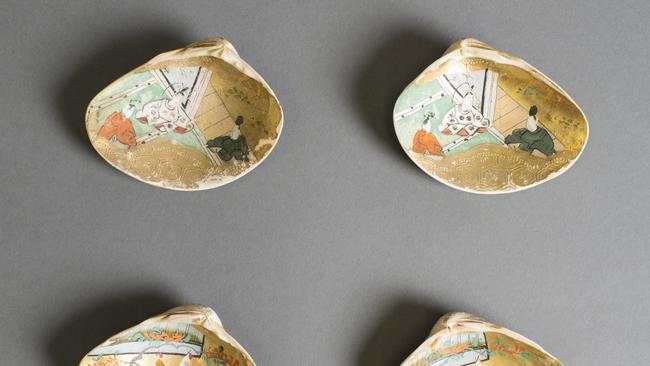
4. KAI-AWASE CARVED AND PAINTED SHELLS
Kai-awase, or shell-joining, was a popular game for Japanese nobility in the early Edo Period (1603–1868). A full Kai-awase set consists of 360 pairs of shells. The game is played by laying the shells faced down and taking it in turns to find the matching pairs. These shells are marine bivalves from the genus Meretrix, in the family Veneridae (commonly referred to as Venus clams).
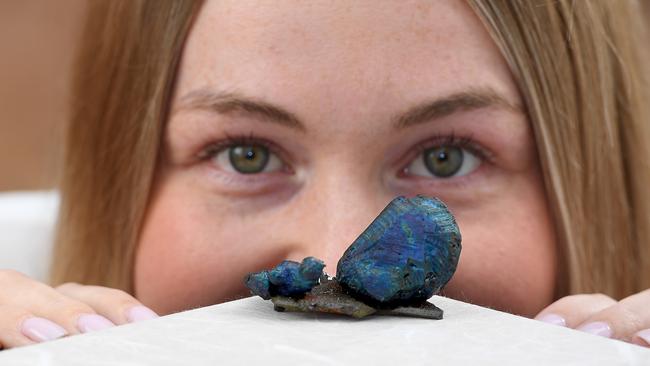
5. BORNITE
Bornite is a copper iron sulphide (Cu5FeS4) and the official state mineral of South Australia.
This specimen from the Olympic Dam Mine at Roxby Downs is considered the finest in the world. It comprises the largest known single crystal of bornite, perched on a tabular barite crystal. Copper is a vital part of the state’s mining history. By the 1850s, SA was the third largest producer of copper in the world and large, rich deposits on the Yorke Peninsula were worked continuously for more than 60 years. In the 1980s, the enormous iron oxidecopper-gold deposit was discovered at Olympic Dam in the state’s Far North.




